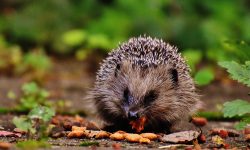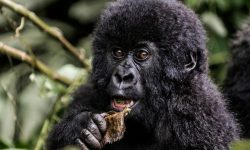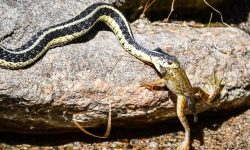Koalas are one of Australia’s most iconic animals, instantly recognizable by their fluffy ears, stout bodies, and calm tree-dwelling lifestyle. Their diet is famously unique, shaped by harsh environments where food sources can be limited or difficult to digest. This specialized feeding system allows them to thrive in habitats other animals avoid.
In the wild, koalas spend most of their day resting or slowly browsing treetops. Their food choices revolve almost entirely around eucalyptus and a few select plant species that provide the nutrients, moisture, and energy they need. Because these foods are low in calories, koalas conserve energy through minimal movement and long hours of sleep.
Understanding what koalas eat helps reveal how they survive in challenging environments and how delicate their ecosystem truly is. Below is the most detailed breakdown of what koalas consume, followed by the 20 foods they rely on most in the wild.
Understanding the Koala Diet

Koalas are strict folivores, meaning their diet is almost entirely made of leaves. Their digestive system is uniquely adapted to break down fibrous foliage that is toxic or indigestible to most animals. Inside their long gut, eucalyptus toxins are neutralized and nutrients are slowly extracted.
Koalas rely heavily on moisture from leaves rather than drinking water directly. This adaptation allows them to survive long dry periods, especially in regions where standing water is scarce. Their low metabolic rate further helps them conserve hydration and energy.
While eucalyptus makes up the majority of their diet, koalas also browse selectively on a range of other native trees. Seasonal growth, leaf tenderness, and water content all influence what koalas choose throughout the year.
How Koalas Choose Their Food
Koalas use a sharp sense of smell to detect moisture levels, toxins, and nutrient content in leaves. Their choice varies daily depending on leaf age, chemical composition, and weather conditions.
Why They Prefer Young Leaves
Young eucalyptus leaves contain more moisture and fewer toxins, making them easier to digest. These tender leaves provide better hydration and higher energy content throughout the day.
The Importance of Moisture-Rich Plants
Since koalas seldom drink water, plants with naturally high moisture are essential. Trees growing after recent rainfall become prime feeding options, offering refreshment and gentle digestion.
20 Favorite Foods Koalas Rely on Most
1. Eucalyptus Leaves
Eucalyptus leaves make up about 90% of a koala’s diet. These leaves provide moisture, minimal calories, and a steady intake of toxins that koalas are uniquely equipped to process.
Koalas use their sensitive noses to detect the safest and freshest eucalyptus leaves, choosing only a few species out of more than 600 available. Their digestive system works slowly to break down each leaf and neutralize harmful chemicals.
Because eucalyptus is so low in nutrients, koalas conserve energy by sleeping up to 20 hours a day.
2. Blue Gum Leaves
Blue gum trees produce soft, moisture-rich leaves that koalas prefer during rainy seasons. These leaves contain higher water content than other eucalyptus varieties.
Koalas often gather on blue gum branches during early morning when leaves are the most hydrated. Their mild flavor also makes them easier to consume in larger amounts.
Blue gum leaves help koalas stay hydrated without relying on standing water sources.
3. Swamp Mahogany Leaves
Swamp mahogany trees offer tender foliage during summer when other trees dry out. Koalas depend on these leaves during heat waves.
The leaves are rich in natural oils that support healthy digestion and immune function. They also grow in wet coastal forests where moisture levels remain high.
This species provides a reliable backup food source during climate extremes.
4. Tallowwood Leaves
Tallowwood leaves contain essential minerals and offer a slightly different nutrient profile than eucalyptus. Koalas visit these trees when seeking dietary variety.
Their leaves remain green through dry months, giving koalas a stable alternative when young eucalyptus leaves are limited.
These trees grow in tall forests that offer shade and cooler temperatures for resting koalas.
5. Red Gum Leaves
Red gum varieties are ideal during cooler months because they maintain soft leaf growth year-round. Their leaves are easier to chew and digest.
Koalas may visit several red gum trees within their home range to sample the freshest leaves. Their flavor and consistency make them suitable for older koalas with worn teeth.
Red gum foliage supports hydration and general energy levels.
6. Ironbark Leaves
Ironbark trees produce tough leaves that koalas eat when other species are unavailable. The leaves have higher fiber content and help regulate digestion.
Despite their toughness, ironbark leaves still carry enough moisture to sustain koalas on dry days. These trees are common in woodland habitats.
Feeding on ironbark shows how adaptable koalas become during drought.
7. Forest Red Gum
Forest red gum foliage is packed with moisture and preferred after rainfall. Koalas often choose young shoots during regrowth periods.
These leaves offer a refreshing change from tougher species, helping soothe digestion. Their nutrient content supports stronger immune function.
Koalas often rest in forest red gum branches during warm afternoons.
8. Manna Gum Leaves
Manna gum trees produce sweeter leaves than other eucalyptus varieties. Koalas consume them heavily during peak growing seasons.
The leaves contain natural sugars that provide quick energy for short periods of activity. Manna gum forests host dense koala populations in certain regions.
These leaves also contain hydrating oils that support soft fur and skin.
9. Paperbark Leaves
Paperbark trees thrive in wetlands, offering soft leaves rich in moisture. Koalas may browse these trees when traveling through swampy areas.
The high water content helps koalas recover from dehydration during drought. Their mild texture is suitable for daily feeding.
Paperbark leaves add valuable diversity to the koala diet.
10. Acacia Leaves
Acacia trees provide occasional forage when eucalyptus leaves are low in quality. Koalas do not rely on them daily but visit during seasonal leaf drops.
These leaves contain higher protein levels and help supplement nutrients missing from eucalyptus. Their tender foliage suits younger koalas learning to feed.
Acacia forests create resting spots with cooler microclimates.
11. Tea-Tree Leaves
Tea-tree plants provide small but valuable amounts of browse for koalas. Their soft leaves offer moisture and trace minerals.
Koalas usually feed on tea-tree leaves during short visits, often on cooler days when moisture remains high.
These leaves help maintain digestive balance during stressful seasons.
12. River Red Gum
River red gum trees grow near waterways and produce lush foliage with strong hydration levels. Koalas frequently feed here after periods of heat.
The leaves contain low toxin levels, making them easier to digest. They also grow in clusters, allowing efficient feeding.
Koalas resting near rivers benefit from cooler temperatures and softer foliage.
13. Brush Box Leaves
Brush box leaves provide supplemental nutrients and are preferred in forested habitats. Their soft texture makes them suitable for all ages.
These trees grow tall, offering safe perches for koalas to feed and rest. The leaves contain balanced moisture that helps sustain hydration.
Brush box forests support stable koala populations year-round.
14. Soft Bark Shoots
Young shoots provide moisture-rich nutrients that koalas eagerly consume. These tender growths appear after rainfall.
Soft shoots are easy to digest and provide quick hydration during hot periods. Koalas usually eat them early in the morning.
This fresh growth helps maintain energy when older leaves become dry.
15. Buds and New Growth
New buds offer concentrated nutrients and mild sweetness that koalas enjoy. They feed on them when trees begin seasonal growth.
These buds provide vitamins essential for immune support and tissue health. Their small size requires careful browsing.
Koalas usually target buds in late afternoon when temperatures drop.
16. Flowers from Eucalyptus
Some eucalyptus trees produce edible blossoms that koalas nibble when available. These flowers contain pollen, nectar, and light sugars.
The blossoms provide a refreshing snack during mating season, supplying quick energy. Their texture is soft and hydrating.
Koalas do not rely heavily on flowers but enjoy them as a natural supplement.
17. Bark Moisture
During extreme drought, koalas may lick or chew bark to access trapped moisture. This behavior is rare but essential for survival.
Bark contains trace minerals and helps prevent dehydration when leaves dry out. Only soft sections are consumed.
This adaptation allows koalas to withstand harsh environmental stress.
18. Fallen Leaves
Koalas occasionally eat fallen leaves when canopy options are limited. Although less nutritious, they provide fiber and minimal moisture.
This behavior occurs mainly during environmental disturbances or seasonal scarcity. They choose relatively fresh leaves.
Fallen leaf consumption is temporary and not a major part of the diet.
19. Leaf Tips
Leaf tips contain concentrated moisture and fewer toxins. Koalas selectively chew these parts when they feel dehydrated.
Tips are easier to digest and support smooth gut function. They are preferred during hot afternoons.
This selective feeding strategy reflects the koala’s precision in choosing the safest food.
20. Charcoal (Occasionally)
Koalas sometimes consume charcoal from burned wood after bushfires. Charcoal helps neutralize toxins from eucalyptus.
This natural detox method allows them to digest stronger leaves when options are limited. It also supports healthy gut balance.
Charcoal consumption is rare but important during post-fire recovery.
FAQs About the Koala Diet
Do koalas only eat eucalyptus?
Eucalyptus makes up most of their diet, but they also consume other native leaves, shoots, and occasional flowers.
Why don’t koalas drink water?
Most of their hydration comes from moisture-rich leaves, especially after rain.
How many leaves do koalas eat per day?
An adult koala may eat 200–500 grams of leaves daily, depending on season and leaf quality.
Are eucalyptus leaves toxic?
Yes, but koalas have a specialized gut that detoxifies the chemicals safely.
Do baby koalas eat leaves?
Young joeys start with a nutrient-rich substance called pap, which helps them digest eucalyptus leaves later.
Can koalas eat fruit or vegetables?
No. Captive koalas must still eat only specific native leaves to survive.
Why are koalas picky eaters?
They select leaves based on moisture, toxin levels, and nutrient content to stay healthy.
Can koalas survive without eucalyptus?
No. Eucalyptus is essential for nutrition, hydration, and survival.
Final Thoughts
Koalas may seem simple because of their slow-moving lifestyle, but their diet is incredibly complex and finely tuned to Australia’s unique ecosystems. By relying on specific trees and seasonal growth, they maintain their health even in challenging environments. Understanding what they eat helps us protect their habitats and ensure these gentle animals continue to thrive in the wild.






